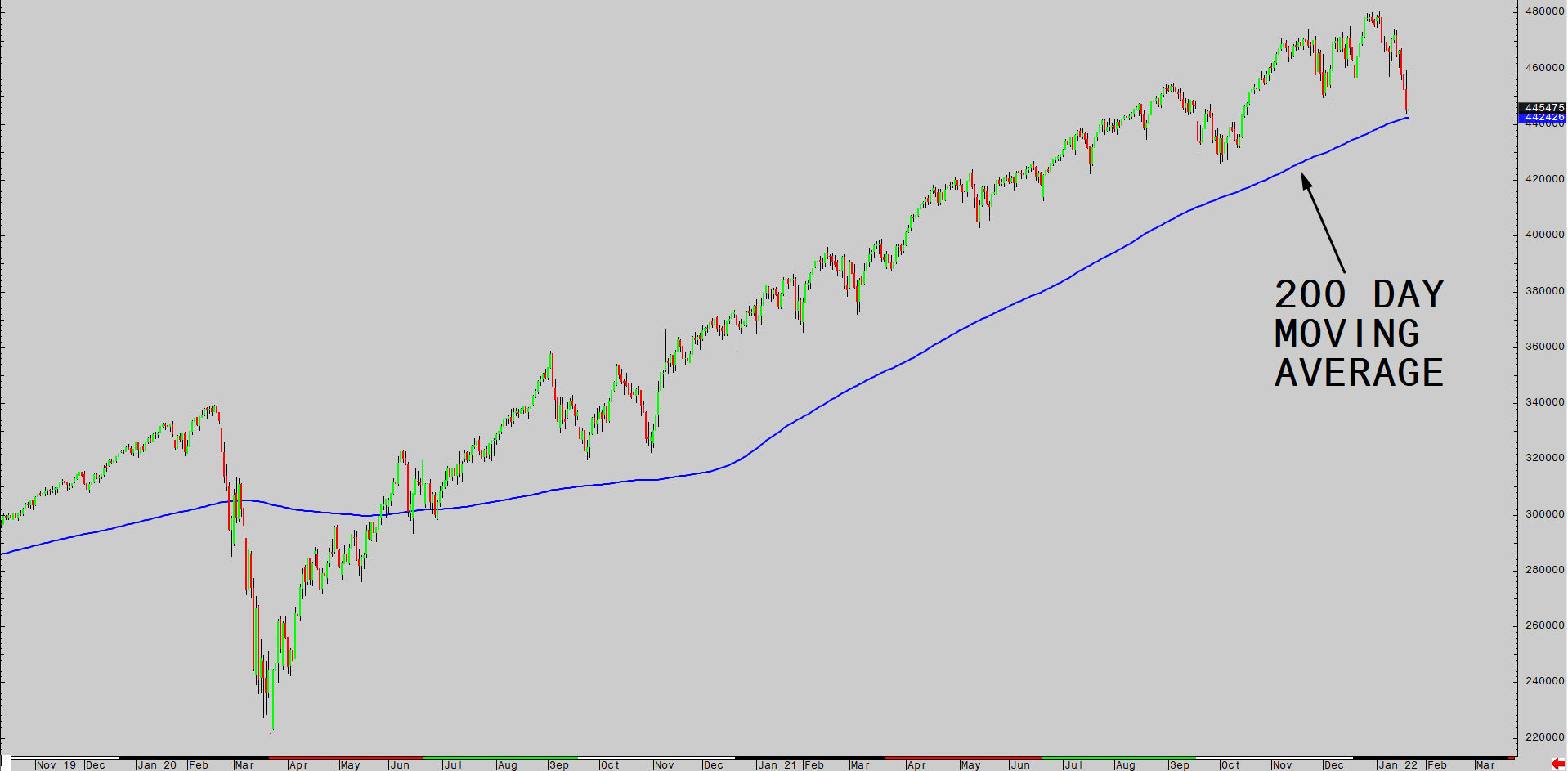In today’s Money Weekend…large investors are selling…watch the bonds…risk parity risk…and more…
Last week, I told you to batten down the hatches and get ready for some volatility.
I hope you were listening because from where I’m sitting, I reckon things aren’t that far off going nuclear.
I always watch what happens in the hour before US markets close. When the big traders come out to play, they like to hit the sell button right near the close.
They also like selling into strength rather than chasing prices lower.
The price action during the week smacked of large traders heading for the exits.
Thursday evening’s session in the US was particularly telling.
After a few bad trading sessions, prices were heading back up as they always seem to do these days. By the middle of the trading session, stocks were 1.7% higher than the previous day’s close.
But then the selling returned, and stocks closed down 1.4% on the day!
So the sellers smashed stocks more than 3% from the day’s high, pushing prices under key support and bringing the 200-day moving average within spitting distance.
S&P 500 on the edge
|
|
| Source: CQG Integrated Client |
Every woman and her dog watches the 200-day moving average (MA) to gauge the strength of the market.
The market never likes to make things easy. Rather than slicing through the 200-day MA and going into freefall, it will probably end up being quite volatile around the 200-day MA before deciding what to do.
Look at the chart above to see the last time the 200-day MA was breached to the downside.
We saw a sharp sell-off through the 200-day MA and then prices recovered and shot back above the 200-day MA, before turning back down and collapsing into the COVID crash.
Short-term momentum has finally turned down, so the odds are increasing that we could see a period of sharp selling pressure.
How to Limit Your Risks While Trading Volatile Stocks. Learn more.
Watch the bonds
The thing that will ignite further selling is if the US 10-year bonds continue to see rising yields.
We did see a sharp sell-off during the week, with the 10-year yield hitting 1.9% before the buying stepped back in.
Now that the 1.8% level has been broken through (last year’s high), my target on the US 10-year is 2.2%, and I think there is a chance the yield could even hit 2.5–2.8% at some stage.
I reckon if we see yields spiking higher and stocks take fright and start heading south, there is a chance that the ‘risk parity’ players will cry uncle and start
deleveraging, which could turn a slight sell-off into a bloodbath.
Risk parity risk
Investopedia.com says:
-
- ‘The risk parity approach to portfolio construction seeks to allocate investment capital on a risk-weighted basis to optimally diversify investments, viewing the risk and return of the entire portfolio as one.
- ‘The risk parity approach builds off of modern portfolio theory (MPT) but allows for the use of leverage and short selling.
‘With a risk parity strategy, an investment portfolio will often include stocks and bonds. However, instead of using a predetermined proportion of asset diversification such as 60/40, the investment class proportions are determined by a targeted risk and return level.
‘Risk parity strategies have generally evolved and developed from Modern Portfolio Theory (MPT) investing. They allow investors to target specific levels of risk and to divide risk across the entire investment portfolio to achieve optimized portfolio diversification.’
In practice, what it means is that the portfolio will be leveraged, and a lot of the borrowed allocation will go into bonds.
So instead of having 60% in stocks and 40% in bonds, they might be leveraged 2-times and 35% will be allocated to stocks with 65% going into bonds.
Based on the original capital, that would be like having 70% in stocks and 130% in bonds.
While the negative correlation between stocks and bonds holds, it is a great strategy that efficiently allocates capital so that the risk/return characteristics are optimised.
In a market where bonds and stocks are both rallying, it is a killer strategy that will make money hand over fist.
The problem arises when the correlation between stocks and bonds becomes positive and both prices are falling.
When that happens, you are leveraged and losing money on all legs. Oh dear.
You can lose a lot of money quickly when things go pear-shaped and there will be pressure release valves that will go off as stocks and bonds start selling off together. Risk parity players will be forced to deleverage, and they will usually end up doing it when everyone else is trying to get out the door at the same time.
I reckon there is a line in the sand at 1.9% in the US 10-year bond yield. If the yield shoots higher than there in the next few weeks, it could be a quick trip to 2.2% and stocks will be testing the 200-day moving average. In other words, watch out.
If you have been following along with me over the past few months, you should feel well prepared having taken part profits on your winners and avoided being too active when the markets were telling us that there was no easy money to be made.
You should be cheering a correction on because you have money on the sidelines, and you aren’t sweating over dodgy positions.
I said last week that a range-bound market is like shaking up a Coke bottle. When the lid comes off, there is chaos. It feels like the market is getting close to popping the lid.
Continue below to watch my ‘Closing Bell’ video, where I analyse bonds and equities and show you what to expect now that volatility is picking up.
Regards,
 |
Murray Dawes,
Editor, Money Weekend
PS: Watch the latest episode of my series ‘The Closing Bell’ on YouTube. Click here or the thumbnail below to view it.



